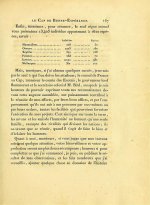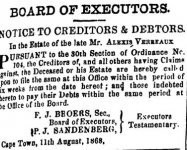Björn Bergenholtz
(former alias "Calalp")

Completion
Still having an "unrealistic expectation of life lengths" I will not continue this unfortunate side-track regarding my formulation "far to early", to early, early (or late!) in their lives ... my lingustic skills dosn´t allow me to to bicker in style, demography is not my main concern ... I was simply looking for the Verreaux Brothers. And their Birds.
I was, in fact, only looking for the man behind the Coua; Jules Pierre Verreaux (1807–1873). And him we solved!
The rest of the Verreaux's I hereby leave to you.
Verreaux ... over and out.
Still having an "unrealistic expectation of life lengths" I will not continue this unfortunate side-track regarding my formulation "far to early", to early, early (or late!) in their lives ... my lingustic skills dosn´t allow me to to bicker in style, demography is not my main concern ... I was simply looking for the Verreaux Brothers. And their Birds.
I was, in fact, only looking for the man behind the Coua; Jules Pierre Verreaux (1807–1873). And him we solved!
The rest of the Verreaux's I hereby leave to you.
Verreaux ... over and out.








